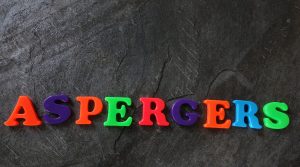What is Aspergers Syndrome
 Aspergers Syndrome, like autism, is a very complex neurological condition. During the same time as Leo Kanner, Hans Aspergers, also identified a specific set of behaviors which were different than those found by Kramer. Hans believed that what he had identified was a separate neurological condition than autism; however, ever since then there has always been a debate between the two philosophical camps. According to the DSM IV, the difference between autism and Aspergers lies in the early stages of childhood development. With autism, childhood development is delay even to the point of children with autism may not talk until after they are up to four years old; however, children with Aspergers Syndrome, talking, reading, preforming math, etc is known to occur not just prior to the age of four but closer to the age of two to three. Big words generally come easy to them and their vocabularies are generally large. Here is what the criteria was:
Aspergers Syndrome, like autism, is a very complex neurological condition. During the same time as Leo Kanner, Hans Aspergers, also identified a specific set of behaviors which were different than those found by Kramer. Hans believed that what he had identified was a separate neurological condition than autism; however, ever since then there has always been a debate between the two philosophical camps. According to the DSM IV, the difference between autism and Aspergers lies in the early stages of childhood development. With autism, childhood development is delay even to the point of children with autism may not talk until after they are up to four years old; however, children with Aspergers Syndrome, talking, reading, preforming math, etc is known to occur not just prior to the age of four but closer to the age of two to three. Big words generally come easy to them and their vocabularies are generally large. Here is what the criteria was:
Asperger’s Disorder (299.80 DSM-IV)
The essential features of Asperger’s Disorder are severe and sustained impairment in social interaction and the development of restricted, repetitive patterns of behavior, interest, and activity. The disturbance must clinically show significant impairment in social, occupational, and other important areas of functioning. In contrast to Autistic Disorder, there are no clinically significant delays in language. In addition there are no clinically significant delays in cognitive development or in the development of age-appropriate self-help skills, adaptive behavior, and curiosity about the environment in childhood.
A. Qualitative impairment in social interaction, as manifested by at least two of the following:
- Marked impairment in the use of multiple nonverbal behaviors such as eye-to-eye gaze, facial expression, body postures, and gestures to regulate social interaction
- Failure to develop peer relationships appropriate to developmental level
- A lack of spontaneous seeking to share enjoyment, interests, or achievements with other people (e.g., by a lack of showing, bringing, or pointing out objects of interest to other people)
- Lack of social or emotional reciprocity
B. Restricted repetitive and stereotyped patterns of behavior, interests, and activities, as manifested by at least one of the following:
- Encompassing preoccupation with one or more stereotyped and restricted patterns of interest that is abnormal either in intensity or focus
- Apparently inflexible adherence to specific, non-functional routines or rituals
- Stereotyped and repetitive motor mannerisms (e.g., hand or finger flapping or twisting, or complex whole-body movements)
- Persistent preoccupation with parts of objects
C. The disturbance causes clinically significant impairment in social, occupational, or other important areas of functioning.
D. There is no clinically significant general delay in language (e.g., single words used by age 2 years, communicative phrases used by age 3 years)
E. There is no clinically significant delay in cognitive development or in the development of age-appropriate self-help skills, adaptive behavior (other than in social interaction), and curiosity about the environment in childhood.
F. Criteria are not met for another specific Pervasive Developmental Disorder or Schizophrenia.
The most important characteristic about Aspergers is that there are no delays prior to the age of 4.
